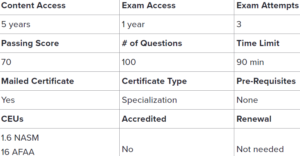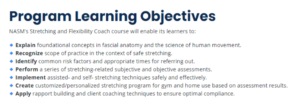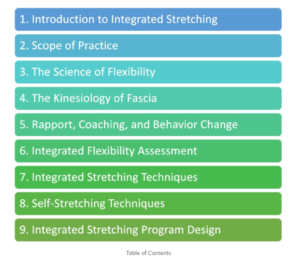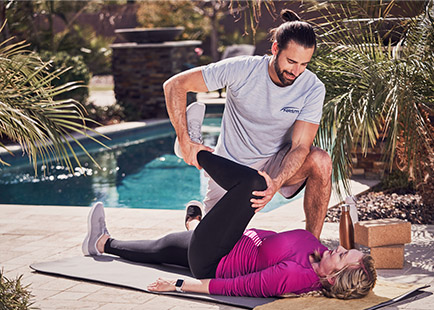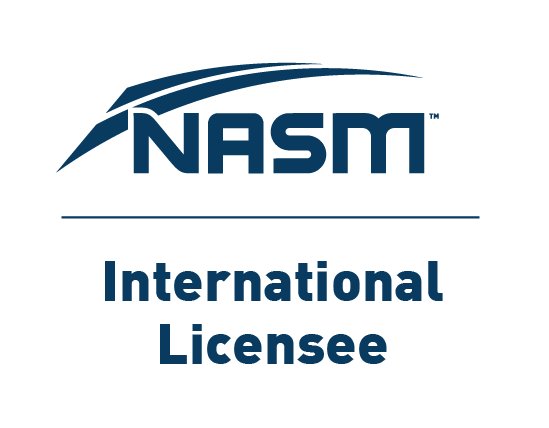
NASM Stretching And Flexibility Coach (SFC)
What You’ll Learn
One of the hottest trends in fitness is stretching. Don’t get left behind. With NASM’s Stretching and Flexibility Coach course, you will master the techniques and strategies needed to start helping clients with assisted stretching and more, all while increasing your client base.
This revolutionary program is built on the latest and most up-to-date scientific research, methods, and insight to prepare you to train clients, assess them, and provide customized stretching plans geared towards their specific needs and outcomes. From athletes to weekend warriors and everyone in between, as a Stretching and Flexibility Coach, you will be able to help all clients lead a more flexible and fulfilling life.
Why Become a Stretching
and Flexibility Coach?
- Implement stretching techniques safely and effectively
- Fully understand health and fitness professional’s role in safe stretching
- Add new stretching-related assessments to your skillset
- Create personalized stretching programs that clients can implement anywhere
- Stretch your expertise and your earning potential with a broader range of clients
- Learn how to explain the science of stretching and anatomy to your clients for better buy-in
Curriculum
Chapter 1: Introduction to Integrated Flexibility
Understand the rationale for integrated stretching and identify for whom it provides the most benefit for.
Chapter 2: Scope of Practice
This chapter provides an overview for identifying appropriate and ethical behavior with regard to application of integrated stretching. Determine when to refer out to another professional.


Chapter 3: The Science of Flexibility and Stretching
Understand the spectrum of flexibility as it pertains to different tissue types and systems. Describe the motor behavior as it pertains to stretching.
Chapter 4: The Anatomy and Kinesiology of Fascia
Learn the foundational concepts of fascial anatomy and identify the locations of the fascial nets.


Chapter 5: Communication and Building Rapport
Apply leading techniques for establishing rapport and trust with clients. Communicate the various benefits and procedures related to integrated stretching plans to clients.
Chapter 6: Assessment
Understand the routine intake procedures and assessments used for integrated stretching programming. Explain the reassessment process after the application of integrated stretching techniques.


Chapter 7: Integrated Assisted Stretching Techniques
This chapter overview interprets client response, both physical and emotional, to integrated stretching techniques. explain traction and perpetual movement as integral to integrated stretching techniques.
Chapter 8: Self-Stretching Techniques
Understand the role of self-stretching in an integrated stretching program. Describe self-stretching options appropriate for most clients.
Chapter 9: Flexibility Program Design
Determine appropriate stretching techniques and their frequency based on client assessment results. Describe reassessment approach and resulting program design changes.


FAQ
There are 9 chapters in this course. Assuming it takes about 2 hours to fully digest each chapter, it could reasonably be finished in ~20 hours.
Chapter 2 details Scope of Practice and how our trainers can safely utilize this specialization within their businesses.
